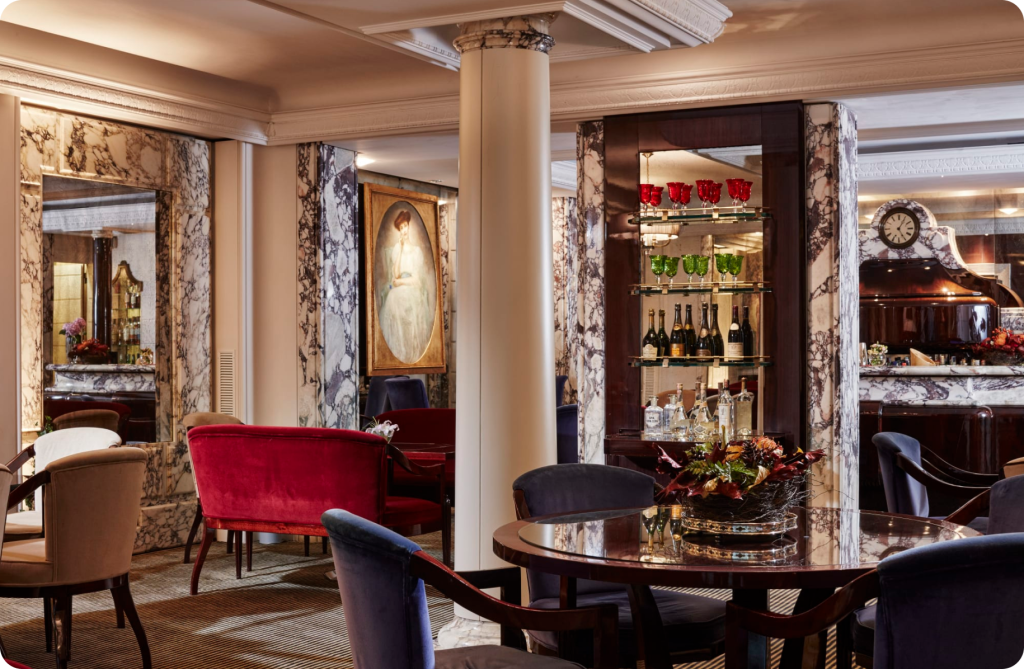Managing revenue for two luxury properties – The Regency Hotel in Florence and Hotel Lord Byron in Rome – means I’m constantly juggling priorities. We operate in two incredibly competitive markets, and my day can swing from long-term forecasting to making real-time pricing decisions. In that kind of environment, you need more than a bunch of dashboards – you need proper insight. That’s what Optimand gives us.
I’ve worked with plenty of systems over the years. Some are too rigid. Others give you more data than answers. Optimand, by contrast, has been built with real-world hotel operations in mind, and it shows.
Flexibility that Suits the Way We Work
One of the first things I noticed about Optimand is how adaptable it is. It’s not just for revenue managers – the platform works equally well for our marketing team, which makes cross-functional collaboration much easier. We’re all working off the same data and can align decisions quickly without confusion.
I’ve set up different dashboards for Florence and Rome, and for different members of the team. Everything is clean and accessible – I can view performance by room type, segment, channel, or pickup trends without trawling through multiple reports. It’s fast, intuitive, and you don’t need to be a data scientist to make sense of it.

Real-Time Website Analytics: Not Just Traffic, but Actual Demand
The Website Analytics module has become part of my daily workflow. It shows future demand directly from our website in a way that’s actually useful – broken down by country, market, room type, and by date. That visibility means we’re no longer guessing where interest is coming from.
Earlier this year, we spotted a spike in searches for suites from the US for spring travel. That led to a quick campaign push with tailored rates, and we filled those rooms far more efficiently than we would have otherwise.
We’ve also used the module to align our minimum stay restrictions with actual search behaviour, rather than just going with gut feeling. It’s this kind of granular insight that really helps fine-tune the strategy. And thanks to this level of detail, we’ve seen direct bookings rise by around 22% year-on-year.
Especially in Florence, where fluctuations in demand can happen overnight, Optimand’s destination-level data has helped us prepare for the unexpected – whether it’s sudden changes in travel regulations, airline disruptions, or even weather events.
PMS Analytics – A single source of truth instead of multiple spreadsheets
The PMS Analytics module is another area where Optimand has streamlined our workflow. It connects directly with our cloud-based PMS, which means I can pull performance data by segment, room type or channel without leaving the platform.
I use it regularly to compare actual pickup to our budget targets, and that can be based on budgets we upload or those generated automatically in the system. This has cut our reporting time by at least 4 to 5 hours a week, and it’s removed a lot of the manual checking we used to do.
Now we can react to underperformance or opportunity areas almost immediately, and I know I’m looking at the right numbers – no more merging spreadsheets or second-guessing data quality.
Rate Shopper – Staying Competitive with live data
In markets like ours, things move quickly – especially on weekends or during major citywide events. The Rate Shopper tool has become essential for keeping pace. It gives us real-time comparisons against a tailored competitor set, and there’s no cap on how often we can check rates. That’s a huge plus.
It’s helped us respond to shifts in the market quickly – adjusting pricing before competitors outmanoeuvre us. And more importantly, we’ve been able to catch and correct parity issues early. Since we started actively managing parity using Optimand, we’ve reduced rate discrepancies by more than 60%, which has definitely helped protect our direct channel.

Dashboards that just make sense
We all know the pain of clunky, overengineered platforms that only your analyst can use. Optimand’s dashboard builder is the opposite of that – it’s drag-and-drop, flexible, and quick. I’ve built different dashboards for myself, the marketing team, and even our front office manager, each with the metrics they actually care about.
This means internal meetings are faster, and everyone’s more informed. I can build a custom report in under ten minutes – no more chasing tech support or waiting for weekly exports. It’s a small thing, but it makes a big difference day to day.
Improving Conversion with Personalised Offers
One simple campaign – offering free airport pickup for guests booking direct – led to a noticeable uplift in conversions. Guests shown geo-targeted offers have been 30% more likely to convert than average visitors. That kind of impact adds up quickly.
For us, direct bookings aren’t just about margin. They allow us to build better relationships with guests from the start. Optimand has helped strengthen that part of our funnel considerably.

Practical, Reliable, and Built for Real-World Teams
We didn’t adopt Optimand because we needed something shiny and new. We adopted it because we needed something better. It’s clear the product team understands how hotel teams actually operate. There are no gimmicks – it’s just practical, reliable, and built for the way we work.
Whether I’m tracking performance for a big group booking in Rome or tweaking a rate strategy for Florence, Optimand gives me the tools to do my job well – and with far less stress. It’s become an integral part of how we manage revenue across both hotels. And that, to me, is the real benchmark of a great system: when you’d genuinely miss it if it were gone.
